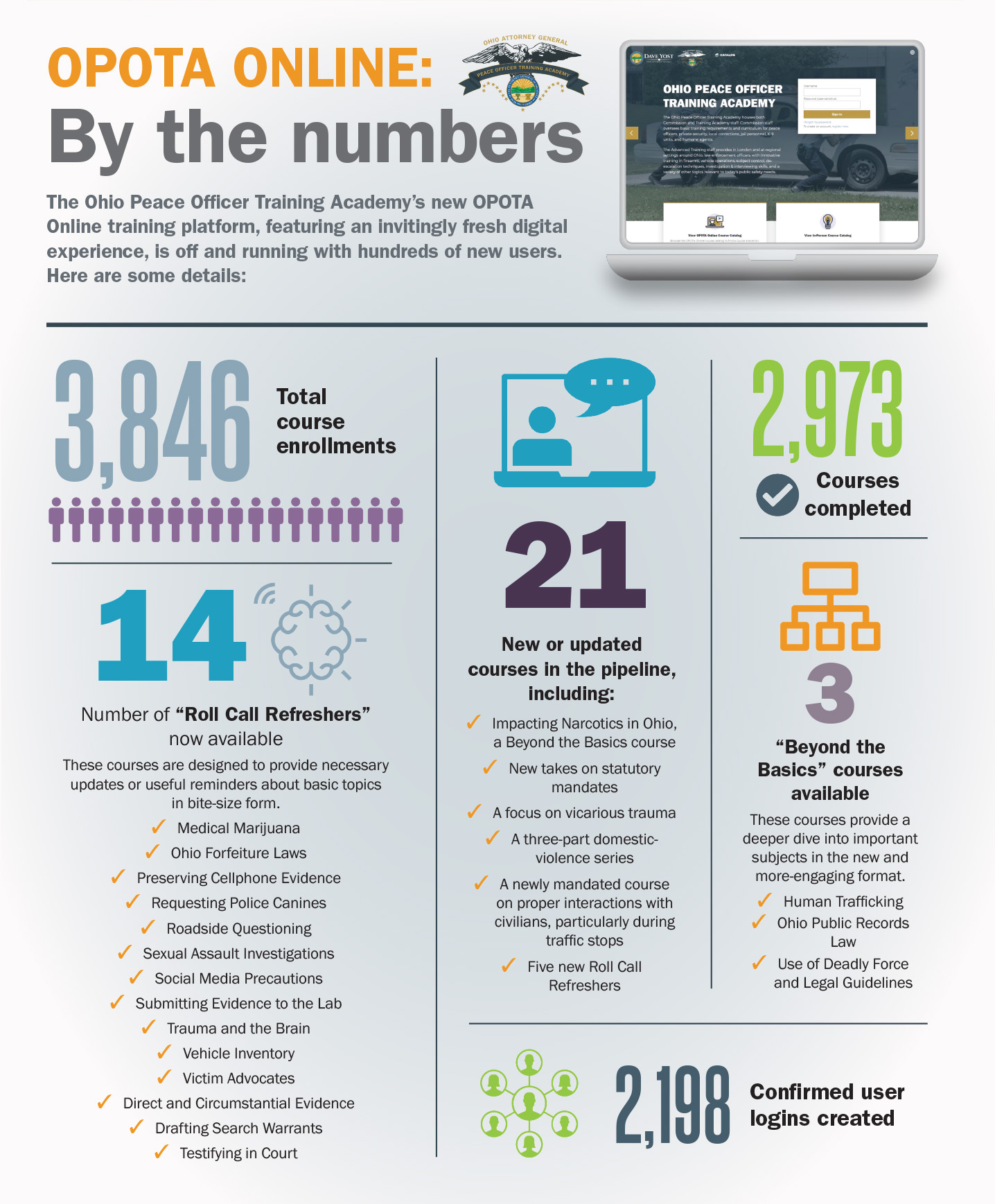Special notice
To receive continuing professional training funding for 2022, law enforcement agencies must certify salary information to the Ohio Attorney General’s Office by Nov. 1, 2021. Find more information on this webpage.
Law enforcement is under pressure nationwide to upgrade training and policy, particularly in the areas of de-escalation, use of force and community relations. But training requires money, and in our decentralized law enforcement system, many agencies already struggle with tight budgets.
That’s why the state should permanently fund advanced training for law enforcement officers.
The benefits are obvious, but the issue is also one of fairness. Whether officers receive advanced training to protect their own lives and to improve citizen interaction should not depend on the depth of a community’s pockets.
A $15 million pilot program, created by the state legislature in the operating budget passed this summer, is a start. Tasked with running the program, my office intends to make the training as accessible and valuable as possible.
The law requires 24 hours of continuing professional training (CPT) in categories approved by the Ohio Peace Officer Training Academy (OPOTA). Of those hours:
- Four must deal with diversity, inclusion and equity.
- Twelve must come from any three of the following areas: responding to mental health; use of force; legal updates; officer personal wellness; responding to sexual assaults; and domestic violence.
- Eight must come from leftover categories from the list above or standards approved by the Ohio Collaborative Community-Police Advisory Board. (Find details at www.OhioAttorneyGeneral.gov/CPT.)
The state will pay up to 50% of officers’ salaries while they take the training. To bring home this funding, though, agencies by Nov. 1, 2021, must send my office salary information — both how much eligible officers earn per hour and the total that would be paid to them.
I’ll emphasize that: THE DEADLINE IS THIS YEAR, per the new state law, even though the training takes place in 2022.
OPOTA is preparing. It will offer curriculums that agencies can use to meet each of the required categories. Also, in the first and second quarters of 2022, the academy will post free trainings to OPOTA Online that can satisfy all 24 hours of CPT requirements.
Now, I suspect that you have questions. Let me address a big one: Do you have to teach the curriculums from OPOTA?
No. Agencies are welcome to create their own trainings in the approved categories, as long as they follow the framework provided by the Ohio Administrative Code. This is especially true for agencies that already have strong training programs and instructors.
There is a caveat here, though: For courses to satisfy the requirements, they must be approved before they are taught.
More questions are answered on the webpage my office created for the continuing professional training program: www.ohioattorneygeneral.gov/CPT.
I firmly believe that you are the experts on your community, and that is why my team decided against mandating that all law enforcement officers take our courses.
If I had made the state budget decisions, the 2022 CPT would have been 100% funded. Still, this program can help us build the case for full funding.
The legislature did give me a seat on the 12-person panel tasked with studying permanent funding for LEO training. You and the Ohioans you serve deserve it, and I’m going to fight for it.
Yours,
Dave Yost
Ohio Attorney General
